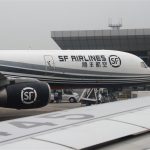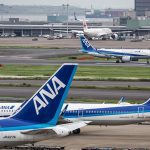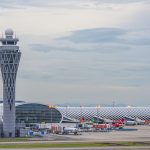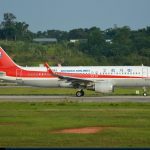Three state-owned airlines predict a record high loss in H1, greater than last year’s shortfall
三大航上半年净亏超457亿元,创历史新高,已超去年全年
三大航上半年净亏超457亿元,已超去年全年
南航、国航、东航是我国三大航空央企,业务量占据国内半壁江山。
受新冠疫情影响,三家国有航空公司预计今年上半年亏损将创历史新高,达457亿元至526亿元,超过 2021 年的总亏损。
按三大航预计亏损程度排列,南航预计今年上半年归母净亏损最小,为102亿元到121亿元。其次为东航,预计亏损为170亿元至195亿元。国航预计上半年亏损最高,达185亿元到210亿元。
相比之下,去年三大航空公司归属于上市公司股东的净亏损总额为409亿元。
疫情反复、油价高企、人民币贬值为三大航亏损主要压力。

Three state-owned airlines predicted a record high of loss of around 50 billion yuan ($7.4 billion) in the first half of this year, greater than the total loss in 2021, driven by COVID-19 outbreaks.
Air China predicted the highest loss from 18.5 billion to 21 billion yuan, followed by China Eastern Airlines, from 17 billion yuan to 19.5 billion yuan, and China Southern Airlines from 10.2 billion yuan to 12.1 billion yuan.
In comparison, the total net loss attributable to shareholders of listed companies in the three major airlines last year amounted to 40.9 billion yuan.
The carriers attributed the loss to the repeated flareups of COVID-19, the rising cost of fuel and oil and the depreciation of the yuan, which increases the pressure on costs.
The Chinese aviation industry has been through a difficult first half of the year, with the number of daily flights reaching their lowest level at 2,967 in the first six months of 2022, only 17.8 percent of the same period in 2019.
China Southern Airlines, Air China and China Eastern Airlines are the three major state-owned air carriers in China. In 2021, the revenue of these three companies accounted for 57.31 percent of the total revenue of domestic airlines, according to thepaper.cn.
China Eastern Airlines, headquartered in Shanghai, said it experienced severe challenges from the impact of the epidemic in the first half of the year.
China Southern said its capacity and passenger revenue in the first half of the year decreased by 34.3 percent and 42.6 percent year-on-year, respectively.
Air China said that domestic outbreaks affected many places since the beginning of this year which led to a significant reduction in domestic routeswhile international flights continue to be limited. Furthermore, rising oil prices and exchange rate fluctuations have further aggravated the company’s efficiency.
To help the industry, the government has provided targeted financial support, injecting 3 billion yuan to each of the three main carriers, 2 billion yuan to Capital Airport Holdings Ltd, and pre-allocating 3.29 billion yuan in central subsidies for the first phase of domestic passenger flights.
In terms of financial credit, on the basis of implementing emergency loans worth 65.6 billion yuan for airlines and airports, the CAAC also have issued an additional emergency loans worth 150 billion yuan for airlines.
The Chinese aviation market is experiencing a strong recovery, with flight numbers in July exceeding 10,000 per day, the Chinese civil aviation regulator said, highlighting that between July 8 and 10 the country witnessed more than 12,000 flights, recovering to 64.5 percent of pre-epidemic levels.
The three aviation giants witnessed a total loss in Q1 this year of 21.16 billion yuan with Air China leading the red numbers.








